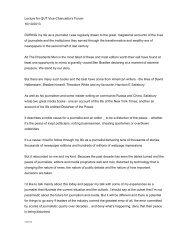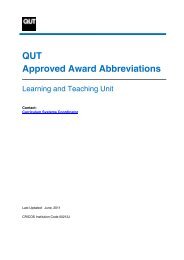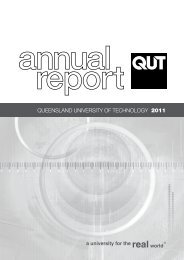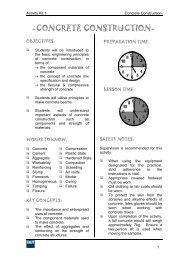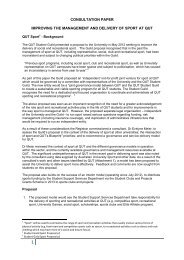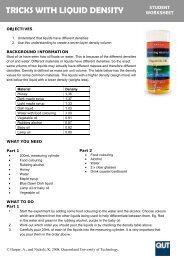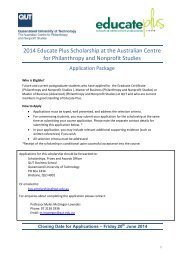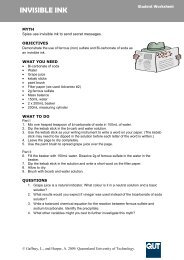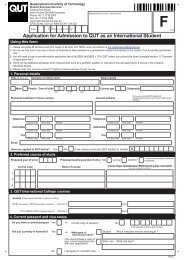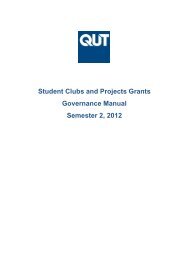EEP201 Fundamentals of Power System Earthing - QUT
EEP201 Fundamentals of Power System Earthing - QUT
EEP201 Fundamentals of Power System Earthing - QUT
You also want an ePaper? Increase the reach of your titles
YUMPU automatically turns print PDFs into web optimized ePapers that Google loves.
Recommended Prior Studies: EEP208, EEP211,EEP219Student Comments"Well presented. Well written and structured course notes." EnergexEEP221 Limits to <strong>Power</strong> <strong>System</strong> Stability• Time domain models and characteristics <strong>of</strong> synchronous machines.• Induction generator models.• Assessment <strong>of</strong> model bandwidth for use in dynamic studies.• Excitation system models, turbine governor models, boiler models, hydraulicsystem models.• Characteristics <strong>of</strong> load plant.• Evaluation <strong>of</strong> small signal adequacy by eigenvalue analysis.• Determination <strong>of</strong> modes <strong>of</strong> electromechanical and control systems.• Identification <strong>of</strong> modes with insufficient damping, eigenvalue participating statesand eigenvectors.• Establishment <strong>of</strong> transfer evaluation <strong>of</strong> gains/phases at identified modelfrequencies.• Time domain dynamic simulations <strong>of</strong> power system operation.• Numerical models for prediction <strong>of</strong> large disturbance behaviour <strong>of</strong> interconnectedpower systems.• Stability <strong>of</strong> system under contingency and emergency conditions.• Stability improvement using: controlled reactive devices, special control systems,braking resistors, U/F load shedding, FACTS.Recommended Prior Study: EEP205EEP222 Maintenance <strong>of</strong> Electricity Supply <strong>System</strong>s• Establishment <strong>of</strong> maintenance policies: review <strong>of</strong> failure rates, emergencyspares, identification <strong>of</strong> maintenance liabilities, identification <strong>of</strong> critical successfactors to minimise life cycle costs, approval and dissemination <strong>of</strong> policy, policyreview.• Maintenance planning: identification <strong>of</strong> constraints, review <strong>of</strong> existingmaintenance programs, establishment <strong>of</strong> plans for periodic actions,documentation <strong>of</strong> procedures, design <strong>of</strong> reporting procedures.• Data recording and analysis: registers <strong>of</strong> defects, design <strong>of</strong> data collection andreporting systems, preparation <strong>of</strong> control charts, computer systems, data basedevelopment.• Maintenance Operations: identification <strong>of</strong> refurbishment needs, resourceevaluations, design <strong>of</strong> work procedures, impact <strong>of</strong> Acts and regulations,identification <strong>of</strong> staff training needs, supervision, auditing <strong>of</strong> work practices.• Maintenance program evaluation: assessment against KPI, modification <strong>of</strong>programs to account for continuing defects and failures or to reflect changingtechnologies.



